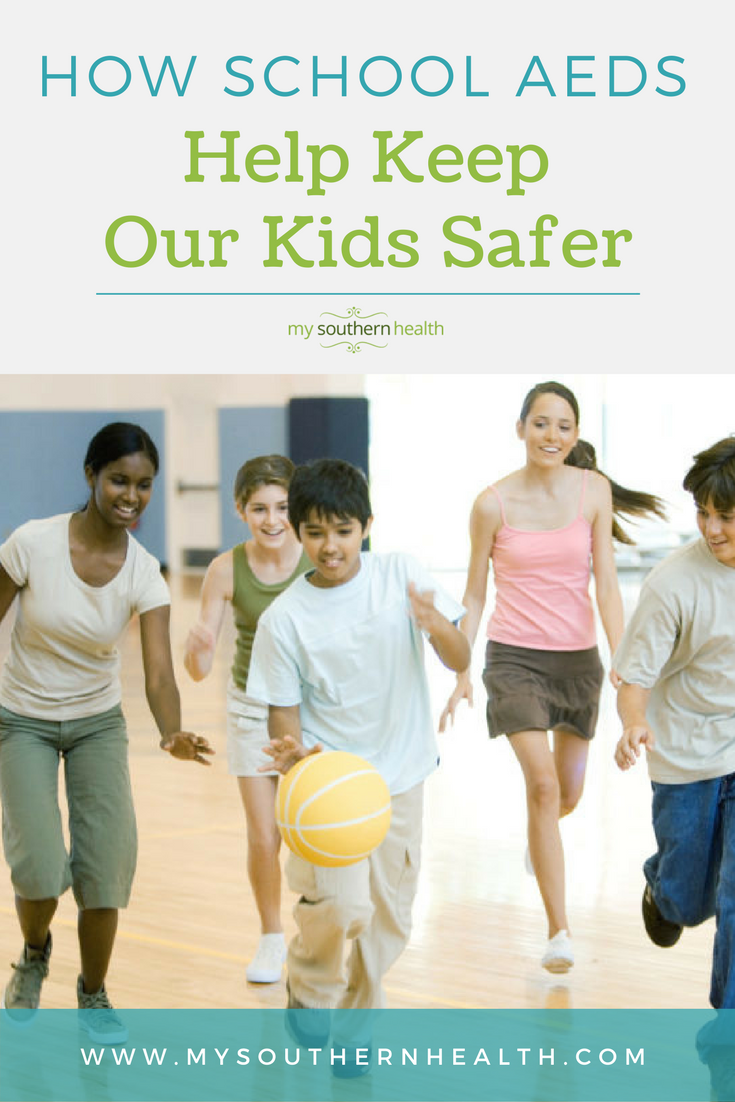More schools require AEDs in case of sudden cardiac arrest, a threat to student athletes.
Think fast: Does your child’s school have an automated external defibrillator on campus? If so, do you know where it’s stored?
An AED is small, portable and automated, making it very simple to operate. Quick access to an AED can mean the difference between life and death. When a person goes into sudden cardiac arrest, the heart suddenly stops beating effectively—and blood stops flowing to the brain and other vital organs. Nothing can restore normal heart rhythm except a shock of electricity delivered through the heart by an AED. Sudden cardiac arrest is responsible for 326,000 deaths of people of all ages every year—including some children and teens.
“Sudden cardiac arrest is the number one killer of student athletes,” said Angel Carter, BSN, RN, program coordinator for Project ADAM Middle Tennessee.
That’s one reason why many experts maintain that each school should keep an AED on campus and train faculty or staff members how to use it. You never know when a student or an adult might need one. Too often, by the time an ambulance arrives on the scene, it’s too late.
Changes in the law about AEDs
A growing number of states now require AEDs on school campuses. At least 14 states now require AEDs in public schools, and five states, including Tennessee, now recommend that schools have AEDs. Also, in July 2016, Tennessee state law changed to require any school with an AED to create an emergency preparedness plan and hold an annual emergency drill.
“But some school don’t know how to do that, so we offer on behalf of Vanderbilt a service from Project ADAM,” said English Flack, M.D., MS, assistant professor of pediatric cardiology for Monroe Carell Jr. Children’s Hospital at Vanderbilt and medical director for Project ADAM Middle Tennessee.
Project ADAM was originally started in Wisconsin in 1999 after a high school student died of sudden cardiac arrest while playing basketball at school. Chapters have been founded in at least 12 states.
Vanderbilt established the Middle Tennessee affiliate of Project ADAM this spring. Carter and Flack both work with schools to make sure they are properly equipped and prepared to use AEDs when needed.
Signs of sudden cardiac arrest
One of the most important things that Carter and Flack do is educate people at schools about signs of impending sudden cardiac arrest. Many people would never think to suspect sudden cardiac arrest in a child or teen.
“They might think, oh, this kid is just tired or out of shape, or they need to work harder,” Carter said. “They don’t know if there’s an underlying cardiac defect or disease.”
But if school administrators, faculty or other staff members can recognize the signs, they’ll know to get the AED ready to use right away. Sudden cardiac arrest can happen without warning, but often a person will experience fatigue, dizziness, weakness and even chest pain just before an event. And Flack and Carter both stress the importance of getting the AED to that person right away.
“You cannot hurt someone with an AED,” Flack emphasized. “There is a misconception that you can kill someone with an AED because it delivers an electric shock. AEDs are programmed to recognize normal vs. abnormal heart rhythms. If it recommends an electric shock, that’s what the patient needs. So always err on using the AED and following the directions because it can save a life.”
Parents, don’t be afraid to ask where the AED is located at your child’s school. It should be in an easily accessible location and not locked away. You’re also entitled to know who’s been trained to use it.

More information
Project ADAM Middle Tennessee is available to help any school that needs assistance in preparing its AED emergency plan or to train people how to use AEDs. The service is free. Learn more by clicking here.

